We’ve been travelling full-time for over 4 years now and, yes, we’ve all had minor health problems, the travel medical kit has had a work out. Boo and The Chef have been what my mum would call “proper poorly” in Laos. Poorly is only proper if you have a fever and/or vomiting that keeps you in bed or at home. There have been multiple cuts, scrapes and rashes. We all had flu is Sri Lanka that lasted a week and Chef had a hernia and emergency surgery. That crisis was beyond the capabilities of even my travel medical kit. Let’s talk about staying healthy on the road, travel medical kit, first aid items you’ll need or hopefully, not need and travel health in general based on our experiences around the globe.
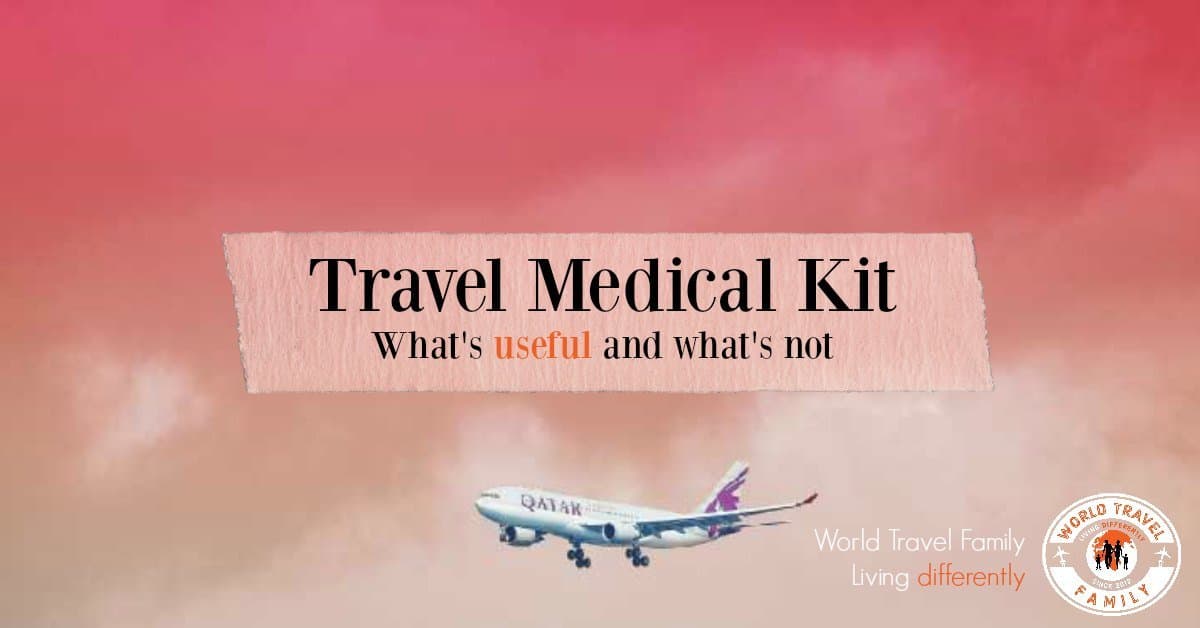
What aspects of Travel Health and Sickness are we Discussing Here?
- What sort of illnesses, diseases and injuries have we had on the road.
- The travel health rules and breaking them safely.
- The travel medical kit we’ve found useful in emergencies.
- What you can buy locally, what you can’t.
The Travel Health Rules to Consider
These are the usual rules, we find them a bit OTT and subject to common sense interpretation by country.
- Don’t drink the water
- Don’t clean your teeth with the water
- Avoid ice and slushies
- Maintain good hand hygiene
- Avoid fruit unless you’ve peeled it yourself
- Avoid salads, you don’t know if they’ve been washed in dirty water
- Avoid food that has been hanging around at room temperature
- Only eat in busy places popular with locals
- Avoid buffets
- Avoid flies
- Avoid western foods in countries that don’t normally cook it
- Get any necessary vaccinations
- Watch your diet, take suppliments if necessary
- Stay hydrated
- Stay out of the sun
What Travel Sickness Have We Suffered From?
We get traveller’s tummy or mild diarrhoea pretty frequently, it’s not something we worry about. I worked in pathology for 20 years, so talking about bodily functions doesn’t bother me at all, just by the way.
“Mum, I’ve got diarrhoea!” is a fairly common call from the bathroom. No big deal, they get over it in a day or so and are their normal selves for the duration, putting away as much food and drinks as they normally do. We don’t worry about it, we never take Immodium, never seek treatment, never take rehydration potions. Some of it is probably viral, some of it is down to what we’re ingesting.
We’ve had serious diarrhoea with high fevers and/or vomiting rarely. In these instances we did use rehydration potions and powders and paracetamol for the fever. These occurred in Laos, London and India.
We’ve also had tonsillitis, mild eye infections and a 5 day illness that we thought may have been Dengue. We took that one to the hospital where they did bloods, we never found out if it was Dengue or not. For the tonsillitis we got antibiotics quickly and easily from a local doctor although I doubt this was really necessary.
Chef managed to give himself a hernia requiring immediate emergency surgery in Thailand receiving fantastic care on our travel insurance.
Multiple cuts, scrapes and mosquito bites needing antiseptic and dressings.
We had one serious toothache requiring extraction or root canal. Chef chose extraction, the dentist was great and spoke perfect English.
Doctors and Dentists on the Road
Wherever we’ve been we’ve found them. They’ve been good and they’ve been cheap. The only time there has been a language barrier was at the local hospital in Vang Vieng, Laos and in this instance we muddled through based on my ability to read blood test results fluently. Every other doctor or phamacist we’ve seen has spoken perfect English. Don’t ever think that medical care is poor everywhere except your home country, it’s not, certain countries are global centres for medical tourism, for example India for plastic surgery and Thailand for dentistry, cosmetic surgery and luxury rehab centres. Standards can be extremely high and your insurance will give you access to the best available. A priviledge, yes, but you’d be crazy not to take advantage of it.
In general we find we seek medical help less often on the road than at home, I guess we tough it out more and don’t go running to the doctor just because we can. That said, we have great travel insurance and we know that if we need it, we can get evacuation or repatriation as well as top-notch private hospital treatment without the price tag. To find a local doctor or dentist just use the internet or ask a local. We use this travel insurance.
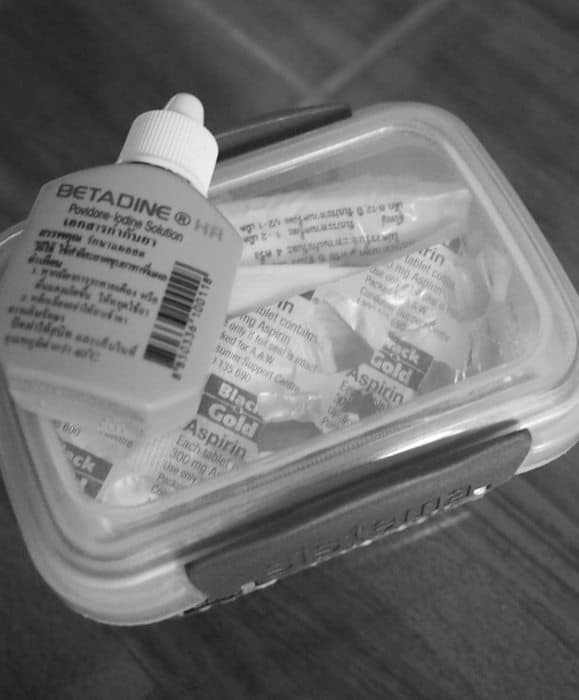
The Travel Health Rules & Breaking Them
We take risks with food that many travel newbies would be scared by, the children have iced fruit shakes often. So much for the first rule of travel health Avoid Ice.
We’re blatantly ignoring rule two Avoid Salads. When dishes come with a salad garnish my boys usually eat it. In Luang Prabang we ate baguettes with salad every day, there were few other options.
Rule three Avoid Western Food in Asian Countries ain’t gonna happen with my boys. They both love pizza and the Laos baguette pizzas loaded with wild mushrooms were delicious. Just use your common sense.
We’re pretty good at picking places that look hygienic and have a rapid turn over. The Chef knows all about commercial food hygiene, after all, so we’re good for rule five.
Rule six, the one about looking for busy places doesn’t always apply. In sleepy Vang Vieng, nowhere was busy. We found a great family restaurant that was always empty through no fault of its own. Their food was excellent and the place was spotless ( It’s called Santana, it’s on the river).
We’re very good at Maintaining Good Hand Hygiene, this is important for viruses and bacterial contamination. I use alcohol gels and antiseptic wipes on buses and trains. Most of the time it’s easy enough to find soap and water so we don’t need the gel. In a lot of Asian countries, it’s normal to have a handwashing station in the restaurant.
Swimming and playing in the river isn’t recommended either, but the boys were having so much fun we didn’t want to stop them. They’ve had plenty of mouthfuls and they get it in their eyes and ears every time. The eye infections didn’t come from the river.
UPDATE: The big exception to the above travel-health-rule-ignoring is Nepal. We got back recently and had endless tummy problems there, nothing too serious, but incessant despite being ultra-careful. India was a comparative walk in the park compared to Nepal. Read about altitude and tummy problems in Kathmandu here.
Our Travel Medical Kit has seen plenty of use.
The Travel Medical Kit, What We’ve Found Useful.
First of all I’m going to tell you that you probably don’t need one of those ready-made travel medical kits. I did buy one once, years ago, fell for the marketing and never used it. If you’re going totally off the beaten track then maybe there is an argument for sterile needles and scalpel blades, but most of us don’t. Put your own kit together.
You can buy or replace just about everything locally, so don’t feel you have to bring a huge supply. We find it’s best to keep the travel kit stocked with basics all the time. Kids always get sick when the shops are shut.
An electronic ear thermometer. This is my favourite item in the travel medical kit and the one thing I couldn’t replace locally. Mine has been discontinued, this is the latest compact model.
It’s a Braun compact ear thermometer, it’s been with me for 4 years and still works fine. This gizmo is pocket-sized and it’s the first thing I grab if there is any suspicion of anybody being sick. It tells me the truth every time. Our old one died in Australia and we couldn’t replace it, I tried all sorts of cheaper thermometers, none of them were any good, in the end I had this one sent over from the US. You’ll also need a supply of plastic covers for the lens.
Without this I wouldn’t be able to tell you that my temperature was 103.5F when I had flu in Sri Lanka. I was hot!
2. Iodine. I’ve got a tiny bottle of Betadine, they sell it in almost every shop in Thailand and it’s a lifesaver. Every little cut, scratch and insect bite gets a shot of Iodine. It’s supposed to work for fungal infections as well as bacterial. The iodine fits into the outside pocket of my day pack and is always handy. On our first RTW we carried a large can of Betadine iodine spray, this little bottle is so much more portable.
If you’d like to buy Iodide for your first aid kit, find little Betadine bottles here.
3. Plasters ( Band Aids), Dressings, Bandages and Tape. We’ve used plasters a lot. Thankfully we haven’t needed any of the other items. D once lacerated his knees on an escalator in Britain, I really wished I’d had decent sized dressing with me that day. I always carry them now.Always cover cuts, scrapes and picked insect bites. In the tropics it’s very easy for them to become infected and school sores to develop.
4. Ear Drops. My husband swims regularly at home and picks up ear infections ( swimmer’s ear) from time to time. Our GP told him to rise his ears with vinegar after swimming to stop infections starting. We can’t carry a bottle of vinegar with us, so instead we have a little bottle of Aqua Ear solution. I use it on everybody after they’ve been in the river. You could try silicone ear plugs to keep the water out, I’ve seen Macks Silicone Earplugs recommended for swimmers, we haven’t tried them.
5. Children’s and Adults’ Paracetamol. For headaches and fevers. We bought more chewable children’s paracetamol tablets in Bangkok. These are also available in Australia ( Panadol). In the UK we buy Calpol Fast Melts. In Laos we had to buy adult tablets and chop them in half. My younger son really can’t swallow tablets so the chewables are vital.
6. Rehydration Tablets. We’ve only used them when Chef and Boo were “proper poorly” with diarrhoea and vomiting in Laos and again for norovirus in London. We’ve seen rehydration sachets in every pharmacy in Thailand and Laos. Our large metal tube pack of rehydration tablets went moldy on the road so there’s no point in buying those. If you don’t have them it’s no big deal, I feel this is one of those products that are over hyped.
7. Sanitary Items.Tampons are hard to find in parts of Asia, particularly super, but not impossible. Stock up when you can.
8. Supplements. We use multivitamins, iron and magnesium supplements. It’s personal choice, but your diet can suffer when you travel. We don’t see broccoli or fresh milk in months sometimes.
9. Aspirin. These are for me, I take them to help prevent DVTs on long journeys.
10. Pises Powder from Thailand. It’s a sulphur-based antibiotic powder, you can buy it in single sachets from 7-11s and pharmacies in Thailand, but you can also find it on Amazon. It’s great for coral cuts. A doctor friend put me on to this stuff, it’s my stand in when the antibiotic cream runs out ( Bactroban, prescription only from Australia).
11. Magnesium oil spray and rock both are antiseptic, I use the rock in place of deodorant, it works great. I find the spray very relaxing, it helps me sleep if I spray it all over before bed, it is absorbed into the body and helps prevent cramp, something I’ve always suffered from.
12. Indigestion Tablets I’m an occasional sufferer, so I always carry some.
All of the emergency medical kit goes in the little plastic food container above, along with nail scissors and tweezers. Obviously, I have to remove these for flights. I carry this little medical kit everywhere with me. We have other things, tiger balm, colloidal silver spray, antiseptic ointment, anti fungal cream and a few other bits and pieces in a big pack. We don’t used diarrhoea stoppers, ever. Doctors told us years ago that they were the worst possible thing to take for any sort of infection, but check that out for yourself. We don’t carry antibiotics as they aren’t usually needed in an emergency, you can buy them easily in Asia and the pharmacists are normally very helpful. This is just what we’ve found useful so far, I hope I don’t have to update this post too much! Find our main FAMILY TRAVEL GEAR page here.
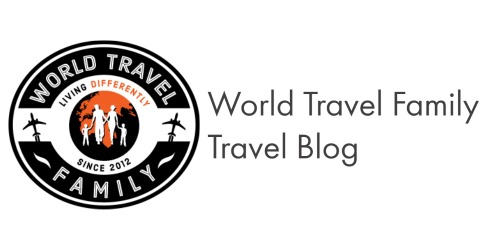
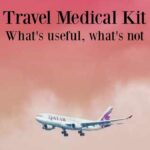
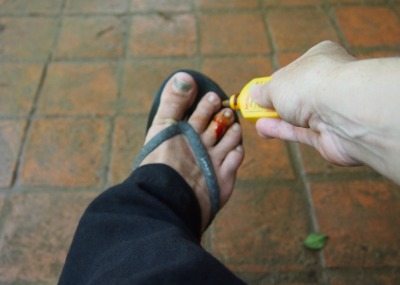
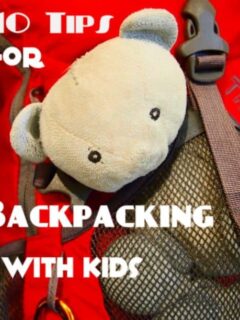
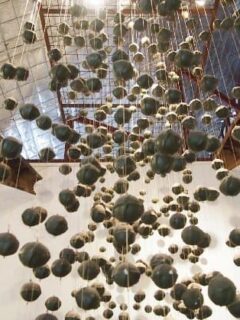
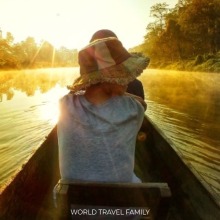
KateG
Monday 9th of March 2020
Hi,This article is so useful for me about medical pack good job and thank you!!!
nubwaxer
Sunday 22nd of May 2016
1. stick to itself gauze tape. 2. waterproof medical adhesive tape to cover the gauze tape.
Ruth Heather Johnston
Sunday 17th of April 2016
Oh and Tiger Balm
alyson@worldtravelfamily
Sunday 17th of April 2016
I've got a little pot of that, bought it in Thailand in 1999. That shows how often we use it, but I like the smell. I rub it on the kids like Vik for colds sometimes or put it on itchy mozzy bites. What do you use it for?
Ruth Heather Johnston
Sunday 17th of April 2016
I'd add Imodium and Stemotil
alyson@worldtravelfamily
Sunday 17th of April 2016
Diarrhoea stoppers are something we never touch Ruth. Not recommended.
Talitha
Tuesday 18th of November 2014
What about anti-mosquito-spray ? You can find them about everywhere, but for some reason I find the ones I buy here in France more efficient than the ones we bought in Borneo or Brazil. That does not apply to ointment against itching, which I prefer to buy locally. I once ended up with 153 mosquito-bites on my legs (after a short walk along the river in Kota Kinabalu) and I was glad to have codeine-ointment or I would have gone nuts from scratching (and yes I know that you shouldn't scratch because it only makes the itching worse...) For the last 16 years we have not taken malaria-prophylaxis - but we do try to stay outside the most infected areas. As two of our kids were prone to have allergical reactions I also carry anti-hystaminics with me. They served twice in 20 years of travels, but I sure was happy I had them when I needed them!
alyson@worldtravelfamily
Tuesday 18th of November 2014
I tend to use a natural cream Talitha, Boots in Thailand sells a good one. I have DEET based sprays but only for very high risk areas. There is a post on here about avoiding mosquitos, we try to avoid rather than go all out on chemicals.